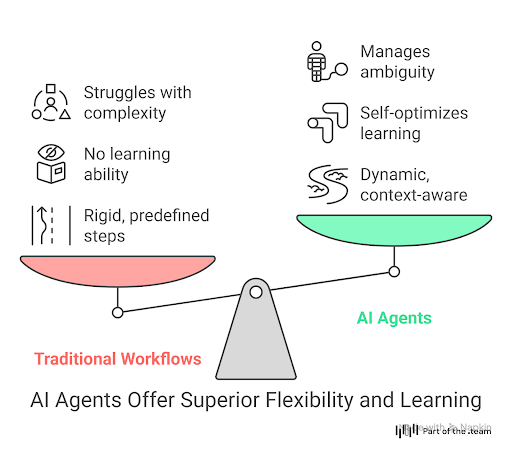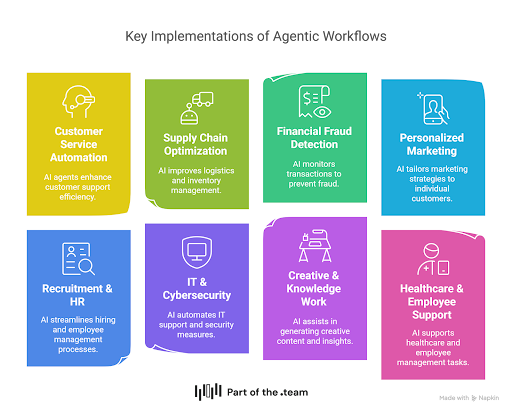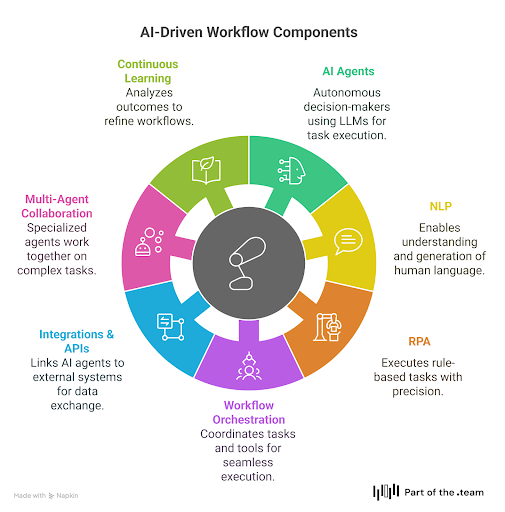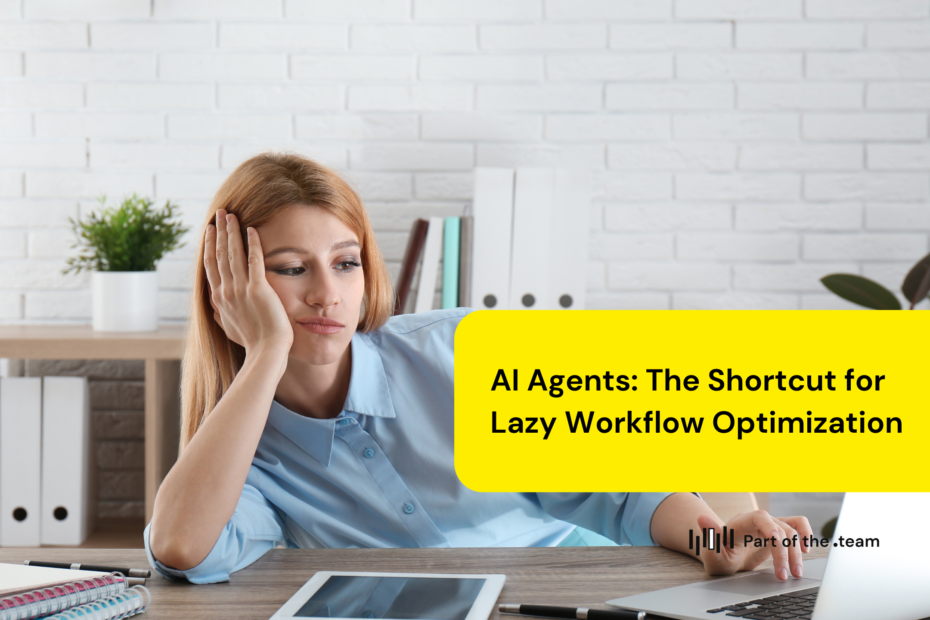Last week, I came across a headline that made me pause: “15% of all work decisions will be made by AI agents by 2028.” It wasn’t just the statistic that caught my attention—it was the realization that many small businesses are still unsure how to start using AI effectively.
I get it. You’ve probably tried tools like ChatGPT, only to feel underwhelmed by the results. Or maybe you’re worried about breaking your existing systems while trying to automate processes. But here’s the truth: AI agents are not here to replace your workflows—they’re here to make them smarter.

In this blog, I’ll explain what AI agents are, how they differ from traditional automation, and how you can identify the perfect starting point for implementing them in your business. Plus, I’ll introduce a simple framework—our 5-Day AI Agents vs Workflows Challenge—to help you focus on where your first AI agent can deliver real value.
What Are AI Agents? (And Why Should You Care?)
An AI agent is more than just software—it’s an intelligent system that can observe, reason, and execute tasks autonomously. Unlike traditional workflow automation, which follows rigid rules, AI agents adapt to changing inputs and environments in real time.
For example:
- A traditional automation tool might send an email when a form is submitted.
- An AI agent goes further—it analyzes the form data, determines urgency, and routes it to the right team member while suggesting next steps based on historical patterns.

At their core, AI agents use large language models (LLMs) like OpenAI or IBM Granite™, combined with external tools, to break down complex tasks into manageable subtasks. They don’t just follow instructions—they learn and optimize as they go.
Key Benefits of AI Agents:
- Efficiency Gains: Automate repetitive tasks like data entry or customer inquiries.
- Cost Savings: Reduce operational costs by up to 30% by eliminating manual bottlenecks.
- Scalability: Handle increasing workloads as your business grows without hiring additional staff.
Why Many Businesses Struggle with Workflow Optimization
Here’s what I’ve noticed when talking to small business owners:
- They’re overwhelmed by where to start with automation.
- They worry about disrupting their current processes.
- They’ve dabbled with tools like ChatGPT but haven’t seen meaningful ROI.
The problem isn’t the technology—it’s knowing where and how to apply it.
Take this example: A boutique marketing agency I worked with was using a CRM but only tapping into 20% of its features. By integrating an AI agent into their existing system, they automated lead qualification and follow-ups, saving 10+ hours per week and boosting conversions by 15%. The kicker? They didn’t need new software—just smarter use of what they already had.
How to Identify Processes Ready for Automation
Not every task is a good fit for automation. To unlock the full potential of AI agents, focus on processes that are:
1. Repetitive and Time-Consuming
Tasks like data entry, invoice processing, or appointment scheduling are prime candidates for automation because they follow predictable patterns. For example:
- A law firm automated contract drafting with an AI agent, cutting admin costs by 40%.
2. Prone to Errors
Manual tasks often lead to mistakes—whether it’s typos in data entry or missed deadlines in project management. AI agents bring precision and consistency.
3. Scalable with Business Growth
Processes that become more resource-intensive as your business grows—like customer support or inventory management—are ideal for automation. For instance:
- A retail store used an AI agent to analyze sales trends and automatically reorder inventory based on demand forecasts.
The Shortcut for Lazy Workflow Optimization
Let’s face it—workflow optimization can feel overwhelming. That’s why I call AI agents the “shortcut for lazy workflow optimization.” Instead of spending months mapping out every detail of your processes, you can start small with one high-impact task and scale from there.
Here’s how we guide you through this in our 5-Day Challenge:
Day 1: Audit Your Workflows
Identify repetitive tasks that drain time and resources (e.g., client follow-ups).
Day 2: Understand Workflows vs. AI Agents
Learn why some tasks are better suited for rule-based workflows while others need adaptive intelligence.
Day 3: Find Your Sweet Spot
Pinpoint one process where an AI agent can deliver immediate ROI without disrupting operations.
Day 4: Design Your First Agent Blueprint
Create a simple plan for integrating an AI agent into your existing systems (no coding required).
Day 5: Launch & Learn
Test your first AI agent on a small scale, measure results, and refine as needed. POTT recommends tackling things like this:

A Task for You: Where Could an AI Agent Help?
Here’s a quick exercise: Think about one process in your business that feels like a bottleneck right now. Is it…
- Responding to repetitive customer inquiries?
- Tracking invoices or payments?
- Managing inventory or supply chain logistics?

Now ask yourself: What would happen if this task could run on autopilot? How much time would you save? What could you focus on instead?
If you’re not sure where to start, don’t worry—that’s exactly what we help you figure out in our challenge.
Why You Need a Guide (That’s Us!)
AI agents are powerful tools—but only if you know where to focus them. That’s where we come in. Our goal is simple: help you identify high-impact opportunities for automation so you can work smarter without disrupting what already works.

By joining our free 5-Day AI Agents vs Workflows Challenge, you’ll gain clarity on where your first AI agent can deliver real value—and how to implement it without breaking a sweat.
Take the First Step Toward Smarter Workflows
Imagine freeing up hours every week while improving accuracy and scalability—all without overhauling your systems or adding complexity. That’s the power of AI agents.
Ready to see what’s possible? Join our free challenge today and take control of your efficiency.
